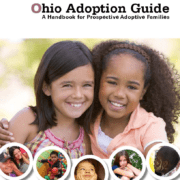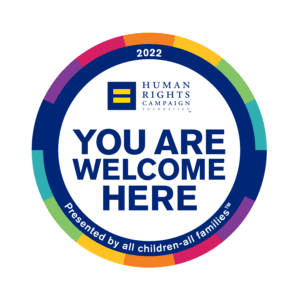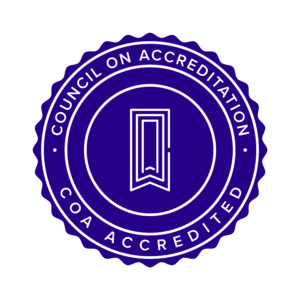Terms and Definitions
about adopting from foster care
Permanent Custody
If it is determined that reunification is not in the child’s best interest, the custodial (county) agency will ask the juvenile court for permanent custody. If granted, the birth parents’ rights are permanently severed and the child is legally free for adoption. The custodial agency is the legal parent and makes decisions for the child. Children in permanent custody may be living in a foster home, a residential facility or other setting.
Adoption
For children in permanent custody, the county that holds custody must seek a permanent family for the child. Often permanency is achieved by adoption. Children are placed with an adoptive family with the intention that this placement will become the child’s forever family. During the initial months of placement (at least six months) the county retains permanent custody and is still the legal guardian. When the family is ready, a court hearing is scheduled and the custody of the child is legally transferred from the county public agency to the adoptive parent(s). Legally, the child becomes their child just as if he/she had been born to the parent(s). A new birth certificate is issued with the name(s) of the adoptive parent(s).
Family Assessment (a.k.a Home Study)
Throughout the years these terms have been used interchangeably. Your NOAS social worker will come to your home and talk with you about your interest in adoption and/or foster care. The State of Ohio requires the completion of a long document summarizing many aspects of each applicant’s history. Your social worker will ask many additional questions. Usually there will be 4 to 8 home visits. At least one of these visits will consist of an individual interview with each applicant. The social worker will want to speak with your children and any other household members. This is a time for mutual assessment as you are asking questions and evaluating if foster care or adoption is right for you and your family, while the social worker is assessing your strengths and what type of child you are interested in parenting.
Approved to Adopt and Licensed to Foster
This term simply refers to the fact that the processes for becoming approved to adopt and becoming licensed to provide foster care are very similar. Should you choose to do both, you can be licensed for foster care and approved for adoption simultaneously on the same form with the same documents (medicals, fingerprints, references, etc.). This is referred to as the joint-assessment process for both adopting and fostering.
Finances
Foster parents are paid a board rate for each day they care for the foster child. This payment comes from NOAS and is based on the child’s level of care and the foster parent’s years of foster care experience. There is medical coverage for children in foster care.
Adoptive parents have the opportunity to talk with the custodial agency about adoption assistance or subsidy prior to the adoptive placement. Most children are eligible, but some do not qualify. You will have this information prior to placement, so you can make the best decision for your family. These funds will come directly to the family each month from one or several government sources. Children are eligible to be put on the family’s health insurance at the time of the adoptive placement. In addition, many (but not all) of these children have coverage through Medicaid.
Each situation is different and each child’s eligibility may be affected by a variety of factors. You will learn more about the financial aspects of foster and adoptive parenting as part of your pre-service training. As you move closer to having a specific child in your home, you will have the opportunity to know in advance what financial supports will be available.
Waiting Children
This term is used to describe children in the permanent custody of county children services agencies who are in need of a permanent family. They are waiting for someone like you to come forward and adopt them.
Openness
Many of the children placed are older and know their identifying information. NOAS supports the concept of openness in regards to adoption. Many children have important connections to foster parents and/or
family members which need to be maintained.
Title IV-E
The Title IV-E Federal Adoption Subsidy program provides federal financial support for children placed for adoption who meet the eligibility criteria. The county children services agency must determine each child’s eligibility for IV-E funding.
In addition to a monthly monetary payment, these children are eligible for medical coverage under Medicaid and may be eligible to receive assistance and services under the federal Title XX program. Applications for Title IV-E subsidy must be completed by the adoptive family prior to adoption finalization. The amount of adoption assistance is determined by negotiation and mutual agreement between the adoptive parent(s) and the county children services agency.
Need more clarification on the terminology?
Here is how you can contact us
PHONE
Call the NOAS office at 800-686-6627 ext. 126




